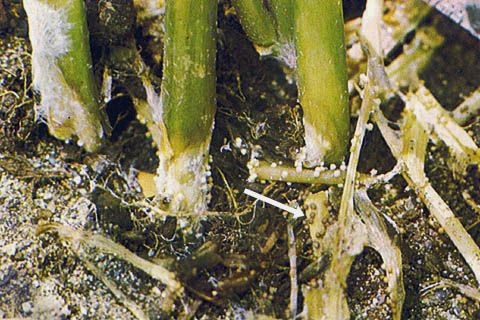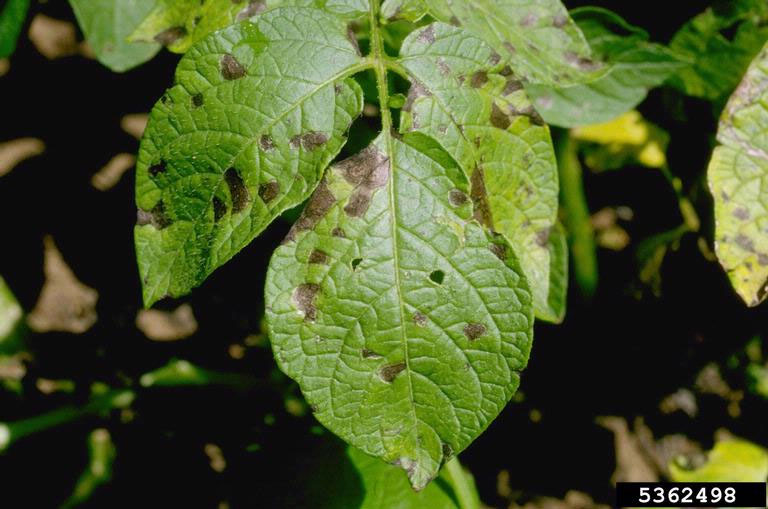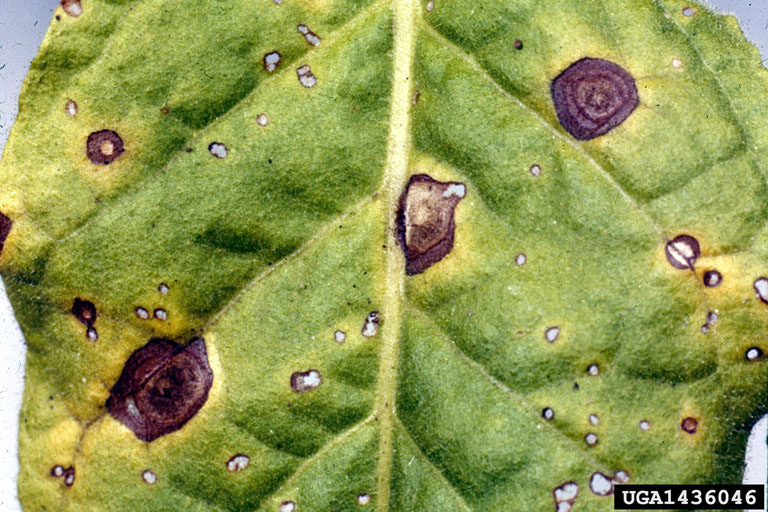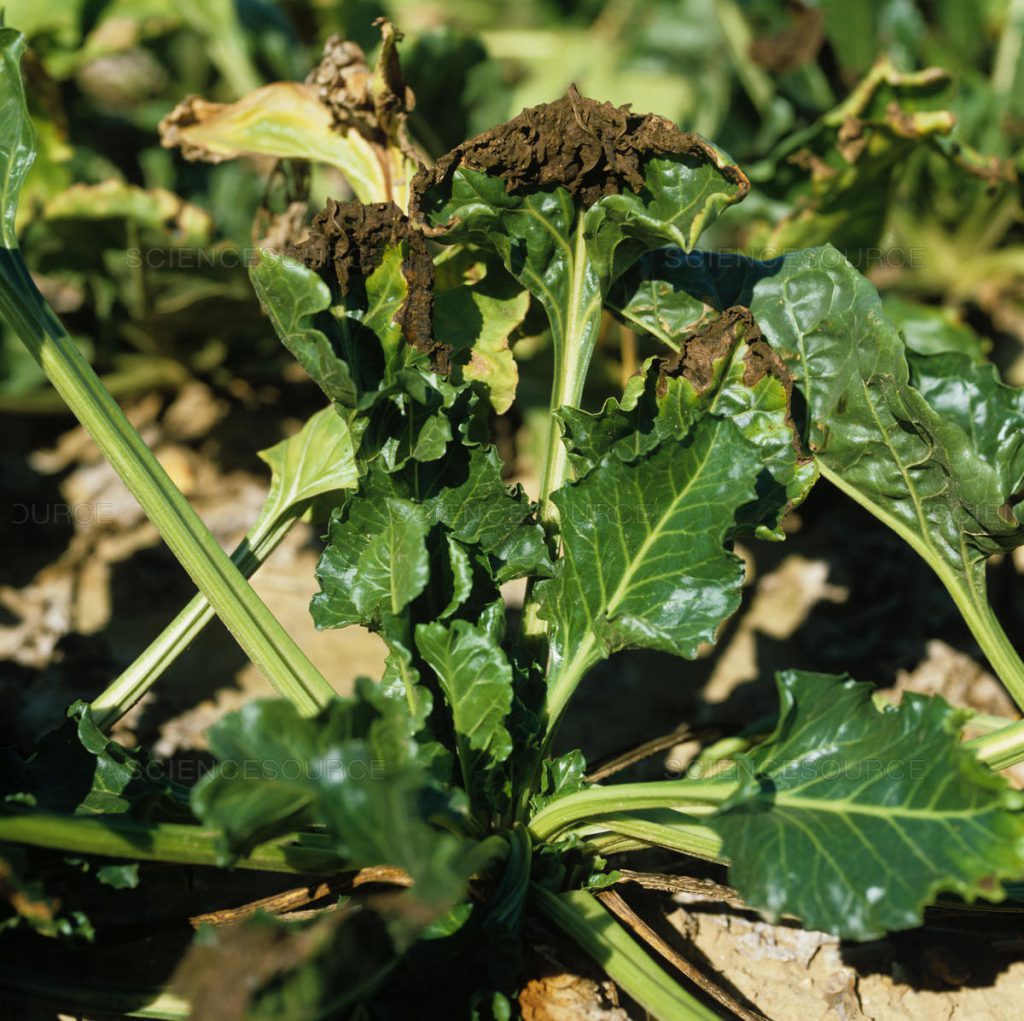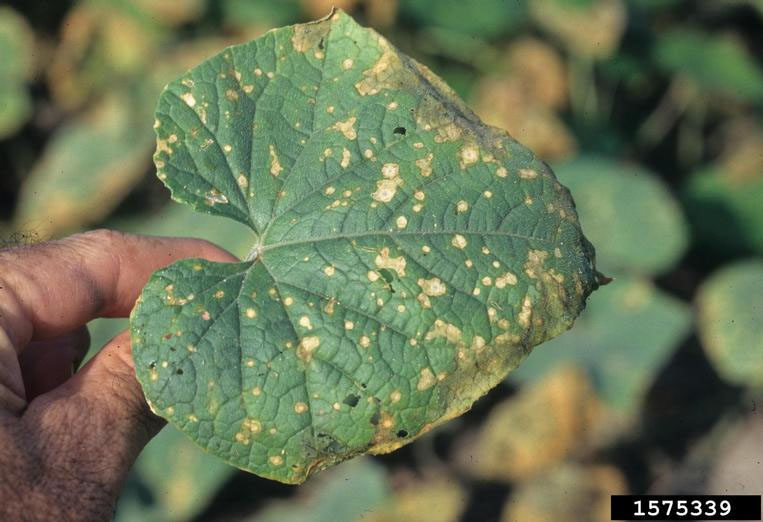Collar rot disease occasionally causes severe damage to irrigated fields and can develop intensively in silos.
Scientific name: Corticium rolfsii, Athelia rolfsii, Pellicularia rolfsii, Sclerotium rolfsii
Other name: Sclerotial blight, stem rot, southern blight, bed rot, cottony rot, Sclerotium wilt, collar rot, crown rot, fire fang root rot, foot rot, southern wilt
Greek name: Σηψιρριζία από Σκληρωτίαση
Symptoms
Collar rot causes wilting of the foliage and rotting of the root, which is coated with a dense white mycelial web up to the neck.
Pathogen – Growth conditions
The collar rot disease is caused in already weakened beets by the pathogenic soil fungus Sclerotium rolfsii (imperfect form). Its perfect form, the basidiomycete Corticium rolfsii, is rarely formed and therefore plays no role in its biology and the disease cycle.
Beets are affected late in the growing season. The disease is favored by excessive moisture and suffocating soil conditions. The fungus develops white very dense mycelium on the surface of the root, which slowly rots down to the heart.
White spherical particles appear on the surface of the mycelium and progressively darken. These are the sclerotia, resistant organs that ensure the fungus multiplies and remains in the soil. Infections (sclerotia, mycelium) are dispersed within the same field or in other neighboring fields, with farming tools and rain and irrigation water.
Treatment
It is recommended to disinfect the soil with appropriate disinfectants. Infected plants should be removed together with their entire root system and destroyed by fire. In addition, long-term crop rotation with plants (e.g. cereals) which are not affected by the pathogen should be practiced and measures should be taken to ensure good drainage of the field.
Source
www.bayercropscience.gr
Athelia rolfsii
Sclerotium rolfsii
Tags: APPLES • CARROT • PLANT DISEASE • POTATO • TOMATO

